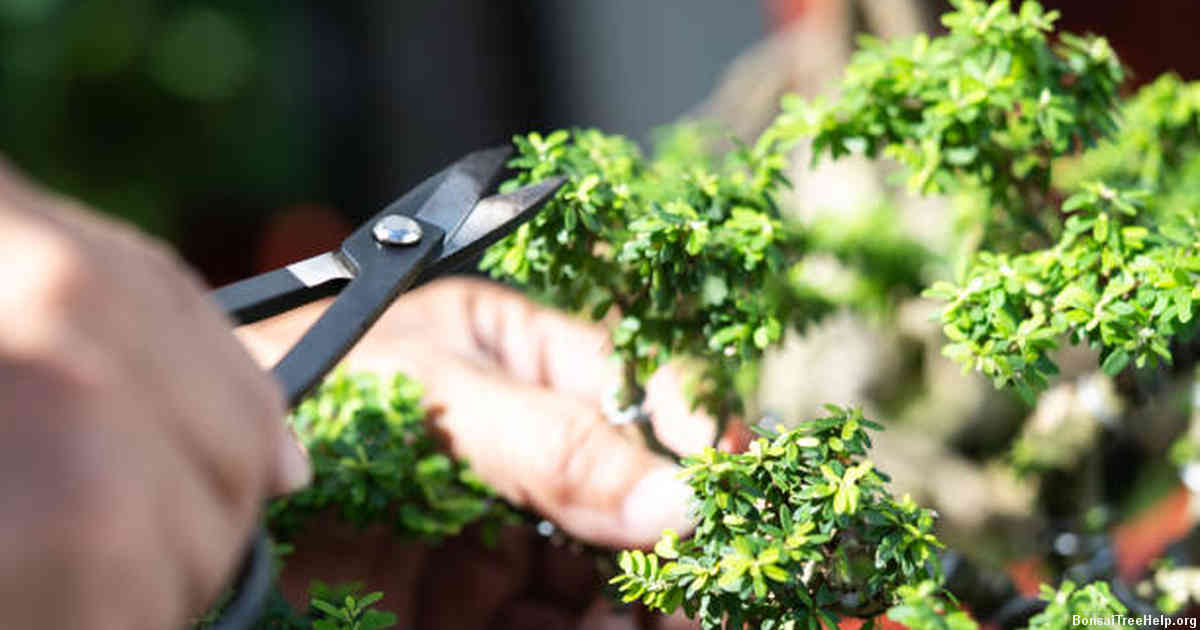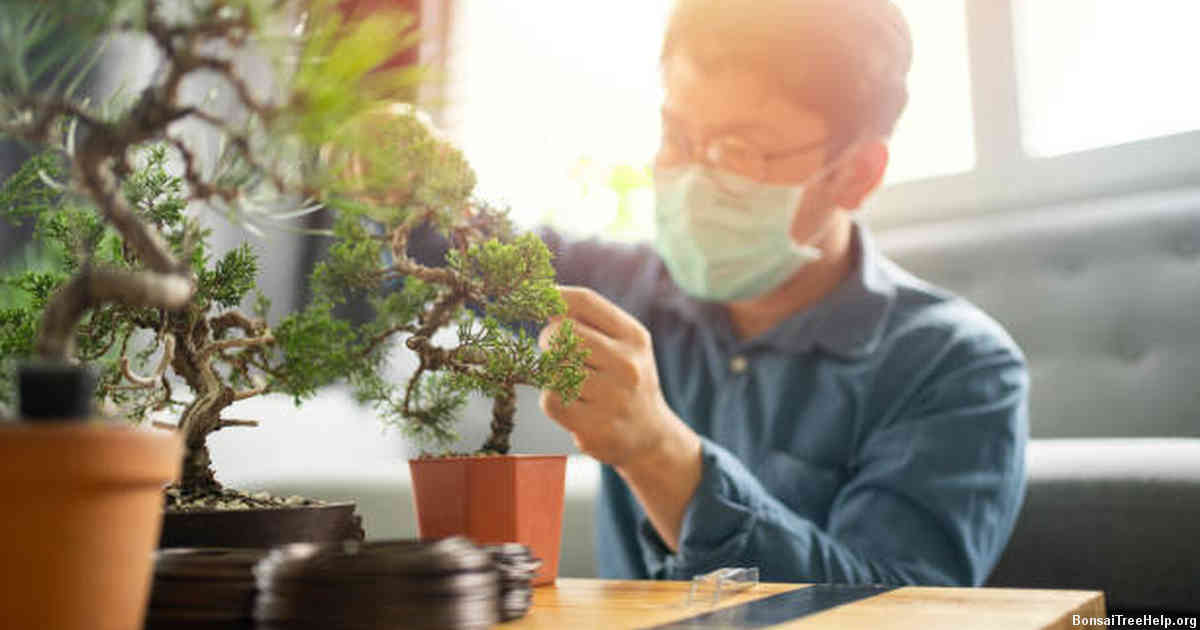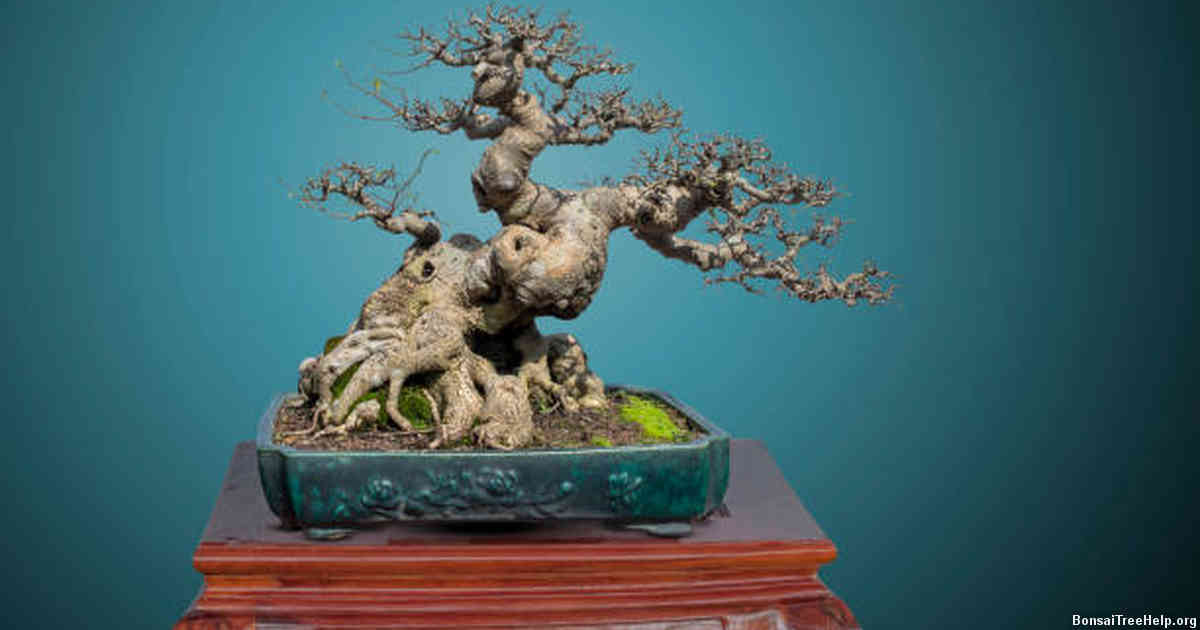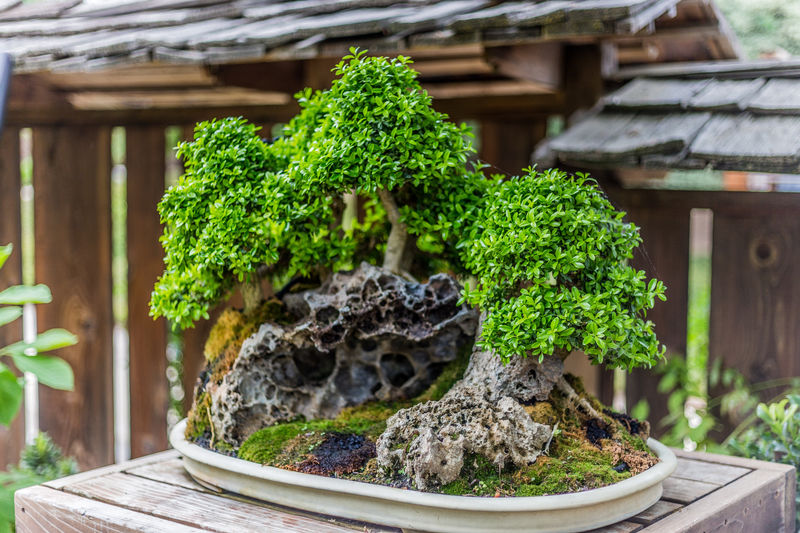
Repotting your Port Jackson Fig Bonsai is an important part of its regular care. Repotting should take place every two to three years, or when the roots begin to outgrow their current container. Before repotting, inspect the tree for root damage and remove any dead or diseased roots. If healthy new growth is evident on the surface of the soil, it may be time to repot.
Contents:
- Understanding Port Jackson Fig Bonsai
- Identifying Signs for Repotting Your Bonsai
- Timing Matters: When to Repot Your Port Jackson Fig Bonsai?
- Choosing the Right Soil Mix for Your Bonsai
- Preparing Your bonsai for Repotting
- Step-by-Step Guide on How to Repot Your Port Jackson Fig Bonsai
- Aftercare and Maintenance Tips Post Repotting
Before beginning, ensure you have all necessary supplies available: a shallow pot with adequate drainage holes; bonsai soil mix suitable for Ficus species; sharp scissors and/or pruning shears; wooden chopsticks; wire mesh; and protective gloves for handling thick roots. Soak both the bonsai tree and its pot in lukewarm water for 15-20 minutes prior to removing it from its pot. Gently massage the root ball until removed from the old container before trimming away any dead or damaged roots with shears and scissors. Place a piece of wire mesh over the drainage holes of your new container before adding soil. Replant your Port Jackson Fig Bonsai at roughly the same depth as previously planted, backfill with prepared bonsai soil mix, lightly compacting as you go along until firmly in place. Finish by gently shaping branches into desired form if desired then situate in shade area out of direct sunlight for one week so that the new root system can adjust properly before resuming normal care routine.
Understanding Port Jackson Fig Bonsai

Port Jackson Fig bonsai is a unique tree, and one of the most popular trees for bonsai enthusiasts. These trees have been around since ancient times and are native to Australia. They’re renowned for their sculptural structure, fast growth rate, and intense natural beauty. Bonsai artists adore their vibrant colors and lush foliage.
The care needs of Port Jackson figs vary depending on climate, soil conditions, and other environmental factors. For those who want to enjoy these beautiful trees in their home or office landscape should understand how to properly maintain them. Regular watering and pruning are essential for its health as is periodic repotting in order to prevent root congestion. Not only will this help keep your bonsai looking its best but it also increases the tree’s vigor by providing new healthy soil with better drainage qualities.
When it comes time to repot your Port Jackson fig bonsai you’ll need to ensure that you choose an appropriate container size based on the current dimensions of your tree’s root ball. Selecting a pot with holes will provide the proper aeration for proper water absorption so be sure that your selected container has at least two drainage holes present before planting your tree into it. Depending on where you live, spring may be considered ideal timing as rainwater from winter helps jumpstart new growing season. That said, anytime after a dormant period when buds begin sprouting is generally seen as an optimal time for repotting these particular species of tree bonsai.
Identifying Signs for Repotting Your Bonsai

One of the most important steps in maintaining a healthy and attractive port jackson fig bonsai is repotting it when needed. Knowing how to identify signs that indicate your bonsai needs to be repotted will help keep your miniature tree vibrant and growing strong. Repotting should typically occur every two years, though you may need to repot it sooner or later depending on its specific situation.
It can be helpful to observe several signs in order to know whether or not your port jackson fig bonsai requires a new pot. If you find that roots are spilling out from the drainage holes at the bottom of the pot, then this indicates that it has already become root-bound and is in dire need of fresh soil and more space for its roots. Examining the color of the foliage can give an indication as to whether or not there’s enough minerals available for it–if you see yellowing leaves, then this is often due to nutrient deficiency that cannot be corrected by fertilizers alone and thus necessitates repotting with fresh soil containing more nourishing components for your plant.
If water is not staying within its pot after watering, then this could also signify that too much moisture has been used up quickly due to poor draining capabilities of an old over-used soil mix. In such cases, switching over to a better draining soil mixture would facilitate healthier growth conditions. Keeping these indicators in mind will make sure your port jackson fig bonsai remains happy and healthy no matter what time of year you decide it’s best suited for repotting.
Timing Matters: When to Repot Your Port Jackson Fig Bonsai?

Successfully caring for a Port Jackson Fig Bonsai means understanding when and how to repot the bonsai. Repotting helps rejuvenate the plant’s health, as it replenishes its soil with essential nutrients and removes any harmful pests or organisms living in it. As such, knowing exactly when to repot your plant is crucial for proper care and keeping your Port Jackson Fig healthy.
The best time to repot your bonsai is in early spring when the new growth has already begun. Pruning may be necessary at this point because if left untouched, the foliage may become overcrowded over time which will impede further growth. During the process of repotting, all dead roots should be removed while leaving behind some of the small branches and their respective root systems intact. The compost should then be sifted away from around the roots and replaced with fresh soil made especially for bonsais like those from Japan-trained horticulturists who specialize in growing them. Adding organic matter such as mulch can help add nutrients to promote further growth after potting.
One should not forget about regular watering during this period since having sufficient water helps ensure that newly replanted plants are able to take up vital minerals quicker without having too much stress on their systems due to lack of water availability. However, taking into account some environmental factors like temperature change or wind strength can prevent overdoing it by making sure excess moisture doesn’t stay close to where needed most: near plant’s root system where bulk of water uptake takes place and therefore requires constant access through adequate moistened soils layer so oxygen isn’t blocked out either by heightening standing liquids levels too soon or depriving it off altogether by letting grounds become arid too fast afterwards.
Choosing the Right Soil Mix for Your Bonsai

One of the essential steps to ensuring a healthy port jackson fig bonsai is selecting the right soil mix. This can make or break your plant’s growth, as it will determine how quickly and efficiently they absorb water and nutrients, so it’s important to take into account all that goes into creating the right blend.
The ideal soil mix for repotting your bonsai consists of different parts: organic material, such as humus, compost or bark chips; mineral particles like sand, gravel and pumice; and a source of slow-release nutrition from components like zeolite clay granules or controlled release fertilizer pellets. The two main elements should be in equal parts – one part organic matter to one part mineral components – but you may wish to add extra ingredients if necessary. Your local garden center or nursery likely has pre-mixed soils specifically formulated for bonsai plants available if you don’t want to make your own at home.
Once you have collected all the ingredients needed for your soil mix, its best practice to sterilize them before use by heating them up over an open flame on a hotplate until no more steam comes out – this kills off any microorganisms that may be lurking in the soil which could otherwise cause problems later on down the line. With your new potting mixture prepared, simply fill up your chosen planter with it and allow some time for everything settle before planting any foliage.
Preparing Your bonsai for Repotting

Repotting a port jackson fig bonsai can be a delicate process but with the right preparation, it can become an enjoyable experience. Before beginning the repotting process, prepare your bonsai so that it is ready to thrive in its new pot. This may require a bit of patience and finesse but overall is well worth the effort.
Trim back any roots that are long or have been damaged by prior planting conditions; this will allow for better drainage and ensure healthy development of new roots after being re-potted. After pruning away any excess roots, remove all soil from around the root ball carefully with your hands or a small trowel so that you can inspect for any pests or disease. If needed, use bug spray to eliminate any infestations before proceeding with repotting your port jackson fig bonsai.
Cut off old leaves and branches as necessary during inspection to help make room for growth when placed in the new container; however this should only be done if these parts are dead as excessive pruning may cause added stress on an already fragile tree. Make sure to always avoid cutting into live wood since this may lead to permanent scarring of your prized plant specimen and reduce its aesthetic appeal. Once everything has been properly pruned and inspected, you are now ready to begin repotting.
Step-by-Step Guide on How to Repot Your Port Jackson Fig Bonsai

Fig bonsais are an iconic plant that require special attention to ensure proper growth and development. Repotting a Port Jackson Fig Bonsai tree is essential for keeping the roots healthy and enabling its growth. This guide will take you step-by-step through the process of repotting your beloved port jackson fig bonsai.
The first step in this process is to select the right pot or container for your tree. When selecting a container, it’s important to pick one with drainage holes so excess water can be eliminated easily. Depending on your situation, you may choose a ceramic pot or use traditional japanese bonsai containers made out of plastic or clay. Regardless of which type of container you opt for, make sure it’s larger than the previous one by at least 2 inches all around – this will give your roots room to grow.
Once you have chosen the ideal container for your tree, remove it from its current pot carefully and place into its new home as delicately as possible. Your next move should be filling up half way with high quality soil mix designed specifically forfig trees – this kind of soil provides essential nutrients like phosphorus and nitrogen needed to keep fig trees flourishing. Afterward, submerge the remaining portion with more soil mix until there’s about 1 inch gap between topsoil and edge of pot before giving it a final pat down firmly but gently.
These steps complete repotting phase; however, now that your fig bonsai has been placed in its new home, be sure to provide necessary care such as adequate sunlight exposure (6 hours daily minimum), regular misting/watering (2 times per week), fertilizer application (preferably organic slow release fertilizer every 8 weeks), pruning when necessary (end of growing season is preferred). Following these instructions closely over time will not only extend life spanof port jackson fig but also encourage healthier blooms each year.
Aftercare and Maintenance Tips Post Repotting

Repotting your port jackson fig bonsai is no easy task. Once completed, however, the aftercare and maintenance of the tree may not be as difficult if a few key tips are followed.
For starters, it’s important to keep in mind that the repotted bonsai needs more water than normal because replanting can stress out any plants. Checking its soil daily by sticking a finger into it is always recommended since moisture levels vary from day to day due to weather conditions or sunlight intensity. Although a bonsai should only be watered when its soil feels dry to touch, an extra dose of water will help replenish what was lost during repotting and strengthen the roots even more. Moreover, using a mister sprayer with distilled water will encourage new foliage growth while helping retain moisture levels within the compost without saturating it.
Fertilizer should be used three weeks after repotting to stimulate root growth while also protecting newly developed bark cells in order for them to establish themselves firmly on young branches and trunks. To ensure good health and strength of one’s port jackson fig bonsai tree many expert horticulturalists suggest using organic fertilizers full of essential trace minerals at least once every two months since this variety does not require vigorous pruning like other species do. Regular checking for pests such as aphids or spider mites must never be neglected since these tiny insects can cause havoc in one’s garden; you want your trees looking their best.
Leave a Reply